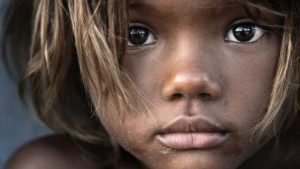Home » Commentary » Opinion » Indigenous child welfare double standards will perpetuate gap
· Ideas@TheCentre
 Bill Shorten has been rightly criticised for his comments suggesting ‘culture’ take priority over the welfare of Indigenous children — and for suggesting that only ‘whitefellas’ say otherwise.
Bill Shorten has been rightly criticised for his comments suggesting ‘culture’ take priority over the welfare of Indigenous children — and for suggesting that only ‘whitefellas’ say otherwise.
But it’s really Indigenous politics that Shorten is talking about taking precedence over children’s best interests.
The Indigenous industry is pushing hard to stop child removals. If removals continue at present rates, the future of the rural and remote ‘homelands’ will be jeopardised and so will the taxpayer funding received by the plethora of Indigenous organisations that provide services to these communities.
The industry says that the way to stop child removals and fix the underlying social problems and dysfunction is to ‘empower’ Indigenous-controlled organisations and communities to implement the solutions they claim to know work on the ground.
This approach was not successful during the era of ATISC (Aboriginal and Torres Strait Islander Commission) which was abolished after presiding over corruption, failure, and an ever-widening gap in social outcomes between the most disadvantaged Indigenous people and all other Australians.
We are now being told that it will be different this time because Indigenous-controlled services will be properly evaluated for their effectiveness and held accountable for the outcomes they do — or do not — achieve.
This is not before time because Indigenous child protection poses the most complex and intractable social problem in the nation.
To ensure children can remain safely at home and close (allegedly) to culture, the array of social problems (from welfare dependence to drug and alcohol abuse to family violence) that plague and are entrenched in Indigenous families and communities — and which are intergenerational in nature and decades in the making — have to resolved within a short, child-centred timeframe to ensure that children are properly cared for and parented.
What this means is that child protection – that is, welfare-based decisions about whether children need to be removed from their own safety and well-being — is the ultimate accountability, and the ultimate measure, of whether services are actually effective at promoting the welfare of the most vulnerable members of Indigenous community.
Creating the kind of double-standard and different treatment of Indigenous and non-Indigenous children proposed by the Opposition Leader, at the behest of the indigenous industry, would therefore clearly be a retrograde step in indigenous affairs.
This is not the way to ‘close the gap’. It is nothing short of a recipe for perpetuating and exacerbating ‘gaps’ by leaving Indigenous children in harm’s way.
Indigenous child welfare double standards will perpetuate gap